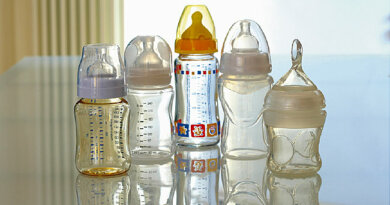9 Childhood Illnesses: Get the Facts
As a parent, you’ve probably handled enough ear infections, colds, and stomach bugs to feel like an expert. But here are nine other illnesses you should know about.
Respiratory syncytial virus (RSV) is an infection of the airways. It usually isn’t serious, but if your child is under 2, or has a heart or lung disease or a weak immune system, it can inflame the lungs and cause pneumonia.
“It’s the most common viral respiratory infection that causes hospitalization in young babies,” says Kathryn M. Edwards, MD, director of the Vanderbilt Vaccine Research Program.
Symptoms:
- Cold-like symptoms such as runny nose, nasal congestion and cough
- Irritability and breathing problems in infants
Talk with your doctor about ways to ease your child’s symptoms. A drug called palivizumab (Synagis) can be used to prevent RSV in high risk infants.
Another viral illness, fifth disease is common in kids ages 5 to 15.
“In most children, it’s benign,” says James Cherry, MD, a specialist in children’s infectious diseases.
A child with sickle cell anemia or a weak immune system can become very ill from fifth disease. It can also be serious in pregnant women.
Symptoms:
A few days later…
- a bright red rash appears, usually on the face, then spreads down the body.
By the time the rash appears, the illness is no longer contagious, Cherry says.
It can take 1 to 3 weeks for the rash to go away. In some children, the rash may itch, and the joints may ache. Your doctor can recommend ways to ease these symptoms.
This contagious viral illness usually isn’t serious.
Children under age 5 are most likely to catch it, through saliva, fluid from blisters and possibly viral shedding through stool.
Symptoms:
A few days later…
- Painful sores may develop in the back of the throat
- Skin rash – typically on the palms and soles, but can also occur on the trunk and diaper region
It usually clears up in 7 to 10 days without treatment.
Croup targets the windpipe and voice box. It is most often caused by viruses, and lasts for a week or less.
Symptoms:
- Usually starts with a sudden onset of barky cough and stridor, which gets worse at night
- Runny nose
- Fever
- Other cold-like symptoms
Use a cool mist humidifier or run a hot shower, and sit with your child in the steamed-up bathroom for 10 minutes. “Breathing in moist air is always good,” Edwards says.
Also if it is a cool, moist night take your child outside with a coat and hat and let them breathe in the night air.
If your child is having trouble breathing, having noisy breathing, or not eating or drinking well, call 911 or go to the emergency room. Steroids, cool mist and breathing treatments are sometimes given to decrease airway swelling.
This bacterial infection is caused by group A strep. (It was once a deadly disease, but now it’s easily treatable.)
Symptoms:
- Sore throat
- Scarlet-colored rash around the neck and face that may spread to the rest of the body.
If your child has a sore throat and rash, call the doctor. If the strep test is positive, then it is important to treat it with a round of antibiotics to prevent rare but serious complications.
This skin infection is most common in younger children. It starts when staph or strep bacteria gets in a cut, scratch, or bite.
It can affect any area of the body but happens most often around the mouth, nose, and hands. Babies sometimes get the irritation in their diaper area.
Symptoms:
- Tiny blisters that burst. Fluid from the sores creates a crust that looks like a coat of honey.
Touching or scratching the sores, which can be itchy, spreads impetigo to other parts of the body and to other people.
An antibiotic ointment, and sometimes an oral antibiotic, can treat it.
This childhood illness inflames blood vessels throughout the body. It is very rare, and the cause is unknown. Boys under age 5 of Asian or Pacific Island descent are most likely to get it. Most get well within weeks. But if it affects the arteries to the heart, it can cause serious, long term problems.
Symptoms:
- Fever that lasts 5 or more days
- Red eyes
- Red lips or tongue and redness on the hands and feet
- Rash
- Swollen lymph node
There is no way to prevent this disease, but it is not contagious. Early treatment is key.
This very rare illness can come on suddenly. Children under age 15 who are getting over a viral illness like chickenpox or the flu are most likely to get it. It can be serious and cause damage to the liver and brain.
Symptoms:
- Vomiting
- Lack of energy
- Irritability or aggression
Later…
The best way to treat Reye’s syndrome is to prevent it. It is strongly linked to aspirin, so never give your child or teen aspirin, especially for a viral illness.
If you suspect your child has it, get medical help right away.
Anyone can catch this bacterial infection of the lungs and breathing tubes, but infants are the most likely to get seriously ill from it.
Symptoms:
A few days later…
- The cough gets worse, and a “whooping” sound may be heard as child gasps for air.
Antibiotics can sometimes help by easing the symptoms, if treated early. Babies are often hospitalized so staff can monitor their breathing.
It is very easy to catch. Your baby should start getting vaccines at 2 months old. Parents and older children need to get vaccinated to protect the baby. A woman should also get a pertussis shot while they are pregnant. Pertussis lasts five years and would still be effective during other pregnancies during that time.



